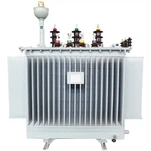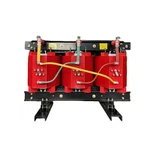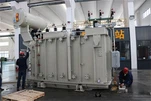Dry-type transformers are widely used in commercial, industrial, and data center applications due to their safety, low maintenance, and environmental benefits. A key technical factor in designing dry-type transformers is balancing rated power, coil design, and manufacturing feasibility, particularly for high-capacity units.
For standard dry-type transformers, the rated power typically ranges from 50kVA to 3150kVA, but larger capacities, such as 4000kVA or even 5000kVA, can be engineered based on specific application requirements. However, as the power rating increases, the physical size of the winding coils also increases, which introduces new technical challenges.
When transformers exceed 3500kVA, especially when designed with copper foil windings, manufacturers may face limits in winding equipment capacity. The thickness and width of copper foil needed to handle the current can become too large for standard winding machines to process. In such cases, a split coil (or split winding) design is often recommended.
Split construction divides the winding into parallel sections, making it easier to manufacture while ensuring thermal performance, mechanical strength, and short-circuit withstand capability. It also helps to reduce localized heat and maintain efficiency, especially for transformers with higher K-factor ratings, such as K13, which require designs to handle non-linear loads and harmonic distortion.
In summary, as dry-type transformers scale in size and complexity, considerations such as rated power, coil material (copper or aluminum), and the need for split windings become critical. Partnering with an experienced manufacturer ensures that the transformer design remains both practical and high-performance.










